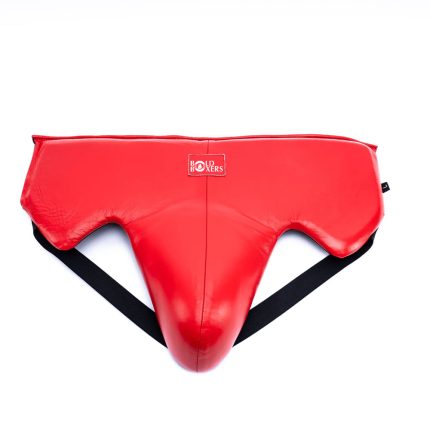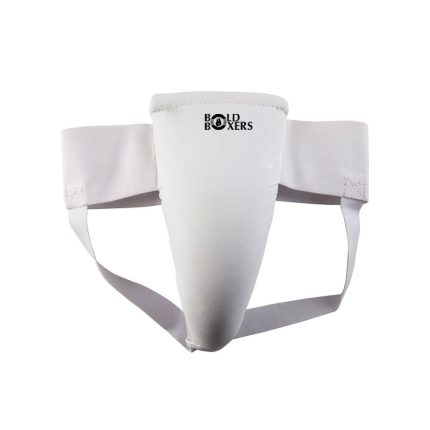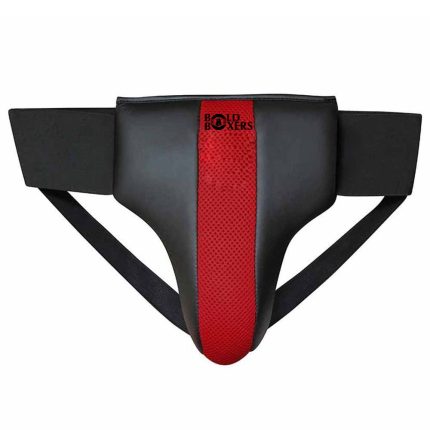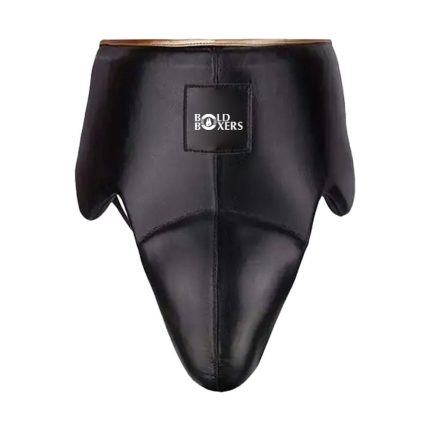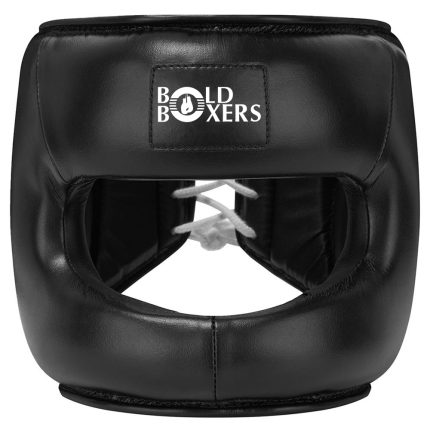Groin Protection
- Groin protection, also known as a groin guard, cup, or protective cup, is essential equipment used in combat sports and martial arts to protect the groin area from impact and injury during training and competition.
- It typically consists of a hard shell made of plastic, metal, or composite materials, designed to absorb and distribute the force of impact away from the groin.
- Groin protection is worn by male athletes and fighters and is inserted into a specially designed compression shorts or groin protector garment for a secure and comfortable fit.
- Some groin protectors feature additional padding or cushioning around the edges for enhanced comfort and protection.
- Groin protection is mandatory in many combat sports organizations and competitions, including boxing, MMA, Muay Thai, karate, and taekwondo, to prevent serious injuries to the sensitive groin area.
- Properly fitted groin protection should cover the entire groin area, including the testicles and surrounding soft tissue, while allowing for freedom of movement and ventilation.
- Athletes should regularly inspect their groin protection for signs of wear or damage and replace it as needed to ensure continued protection during training and competition.
- While groin protection offers significant protection against impacts, practitioners should also use proper technique and defensive skills to minimize the risk of injury during sparring and matches.
Groin Protection
- Groin protection, also known as a groin guard, cup, or protective cup, is essential equipment used in combat sports and martial arts to protect the groin area from impact and injury during training and competition.
- It typically consists of a hard shell made of plastic, metal, or composite materials, designed to absorb and distribute the force of impact away from the groin.
- Groin protection is worn by male athletes and fighters and is inserted into a specially designed compression shorts or groin protector garment for a secure and comfortable fit.
- Some groin protectors feature additional padding or cushioning around the edges for enhanced comfort and protection.
- Groin protection is mandatory in many combat sports organizations and competitions, including boxing, MMA, Muay Thai, karate, and taekwondo, to prevent serious injuries to the sensitive groin area.
- Properly fitted groin protection should cover the entire groin area, including the testicles and surrounding soft tissue, while allowing for freedom of movement and ventilation.
- Athletes should regularly inspect their groin protection for signs of wear or damage and replace it as needed to ensure continued protection during training and competition.
- While groin protection offers significant protection against impacts, practitioners should also use proper technique and defensive skills to minimize the risk of injury during sparring and matches.
Groin Protection
- Groin protection, also known as a groin guard, cup, or protective cup, is essential equipment used in combat sports and martial arts to protect the groin area from impact and injury during training and competition.
- It typically consists of a hard shell made of plastic, metal, or composite materials, designed to absorb and distribute the force of impact away from the groin.
- Groin protection is worn by male athletes and fighters and is inserted into a specially designed compression shorts or groin protector garment for a secure and comfortable fit.
- Some groin protectors feature additional padding or cushioning around the edges for enhanced comfort and protection.
- Groin protection is mandatory in many combat sports organizations and competitions, including boxing, MMA, Muay Thai, karate, and taekwondo, to prevent serious injuries to the sensitive groin area.
- Properly fitted groin protection should cover the entire groin area, including the testicles and surrounding soft tissue, while allowing for freedom of movement and ventilation.
- Athletes should regularly inspect their groin protection for signs of wear or damage and replace it as needed to ensure continued protection during training and competition.
- While groin protection offers significant protection against impacts, practitioners should also use proper technique and defensive skills to minimize the risk of injury during sparring and matches.
Groin Protection
- Groin protection, also known as a groin guard, cup, or protective cup, is essential equipment used in combat sports and martial arts to protect the groin area from impact and injury during training and competition.
- It typically consists of a hard shell made of plastic, metal, or composite materials, designed to absorb and distribute the force of impact away from the groin.
- Groin protection is worn by male athletes and fighters and is inserted into a specially designed compression shorts or groin protector garment for a secure and comfortable fit.
- Some groin protectors feature additional padding or cushioning around the edges for enhanced comfort and protection.
- Groin protection is mandatory in many combat sports organizations and competitions, including boxing, MMA, Muay Thai, karate, and taekwondo, to prevent serious injuries to the sensitive groin area.
- Properly fitted groin protection should cover the entire groin area, including the testicles and surrounding soft tissue, while allowing for freedom of movement and ventilation.
- Athletes should regularly inspect their groin protection for signs of wear or damage and replace it as needed to ensure continued protection during training and competition.
- While groin protection offers significant protection against impacts, practitioners should also use proper technique and defensive skills to minimize the risk of injury during sparring and matches.
Groin Protection
- Groin protection, also known as a groin guard, cup, or protective cup, is essential equipment used in combat sports and martial arts to protect the groin area from impact and injury during training and competition.
- It typically consists of a hard shell made of plastic, metal, or composite materials, designed to absorb and distribute the force of impact away from the groin.
- Groin protection is worn by male athletes and fighters and is inserted into a specially designed compression shorts or groin protector garment for a secure and comfortable fit.
- Some groin protectors feature additional padding or cushioning around the edges for enhanced comfort and protection.
- Groin protection is mandatory in many combat sports organizations and competitions, including boxing, MMA, Muay Thai, karate, and taekwondo, to prevent serious injuries to the sensitive groin area.
- Properly fitted groin protection should cover the entire groin area, including the testicles and surrounding soft tissue, while allowing for freedom of movement and ventilation.
- Athletes should regularly inspect their groin protection for signs of wear or damage and replace it as needed to ensure continued protection during training and competition.
- While groin protection offers significant protection against impacts, practitioners should also use proper technique and defensive skills to minimize the risk of injury during sparring and matches.
Groin Protection
- Groin protection, also known as a groin guard, cup, or protective cup, is essential equipment used in combat sports and martial arts to protect the groin area from impact and injury during training and competition.
- It typically consists of a hard shell made of plastic, metal, or composite materials, designed to absorb and distribute the force of impact away from the groin.
- Groin protection is worn by male athletes and fighters and is inserted into a specially designed compression shorts or groin protector garment for a secure and comfortable fit.
- Some groin protectors feature additional padding or cushioning around the edges for enhanced comfort and protection.
- Groin protection is mandatory in many combat sports organizations and competitions, including boxing, MMA, Muay Thai, karate, and taekwondo, to prevent serious injuries to the sensitive groin area.
- Properly fitted groin protection should cover the entire groin area, including the testicles and surrounding soft tissue, while allowing for freedom of movement and ventilation.
- Athletes should regularly inspect their groin protection for signs of wear or damage and replace it as needed to ensure continued protection during training and competition.
- While groin protection offers significant protection against impacts, practitioners should also use proper technique and defensive skills to minimize the risk of injury during sparring and matches.
Head Gears
- Headgear, also known as a head guard or helmet, is protective equipment worn by athletes in combat sports and martial arts to reduce the risk of head injuries during training and competition.
- It typically consists of a padded shell made of foam or other impact-absorbing materials, encased in a durable outer layer such as synthetic leather or vinyl.
- Headgear covers the top, sides, and back of the head, as well as the ears and temples, providing protection against impacts, cuts, and abrasions.
- Many headgear designs feature adjustable straps and closures for a secure and comfortable fit, as well as ventilation panels to promote airflow and reduce heat buildup during intense activity.
- Headgear is commonly used in sports such as boxing, MMA, Muay Thai, kickboxing, and taekwondo, where head injuries are a significant risk due to strikes and impacts.
- While headgear can reduce the severity of head injuries, it is not foolproof and does not eliminate the risk entirely. Practitioners should still use proper technique and defensive skills to minimize the risk of injury.
- Some organizations and competitions require the use of headgear, while others leave it optional or prohibit its use altogether. Rules and regulations regarding headgear vary depending on the sport and governing body.
- Athletes should regularly inspect their headgear for signs of wear or damage and replace it as needed to ensure continued protection during training and competition.
- While headgear is primarily designed for protection, it can also help improve confidence and focus by reducing the fear of injury, allowing athletes to perform at their best.
Head Gears
- Headgear, also known as a head guard or helmet, is protective equipment worn by athletes in combat sports and martial arts to reduce the risk of head injuries during training and competition.
- It typically consists of a padded shell made of foam or other impact-absorbing materials, encased in a durable outer layer such as synthetic leather or vinyl.
- Headgear covers the top, sides, and back of the head, as well as the ears and temples, providing protection against impacts, cuts, and abrasions.
- Many headgear designs feature adjustable straps and closures for a secure and comfortable fit, as well as ventilation panels to promote airflow and reduce heat buildup during intense activity.
- Headgear is commonly used in sports such as boxing, MMA, Muay Thai, kickboxing, and taekwondo, where head injuries are a significant risk due to strikes and impacts.
- While headgear can reduce the severity of head injuries, it is not foolproof and does not eliminate the risk entirely. Practitioners should still use proper technique and defensive skills to minimize the risk of injury.
- Some organizations and competitions require the use of headgear, while others leave it optional or prohibit its use altogether. Rules and regulations regarding headgear vary depending on the sport and governing body.
- Athletes should regularly inspect their headgear for signs of wear or damage and replace it as needed to ensure continued protection during training and competition.
- While headgear is primarily designed for protection, it can also help improve confidence and focus by reducing the fear of injury, allowing athletes to perform at their best.
Head Gears
- Headgear, also known as a head guard or helmet, is protective equipment worn by athletes in combat sports and martial arts to reduce the risk of head injuries during training and competition.
- It typically consists of a padded shell made of foam or other impact-absorbing materials, encased in a durable outer layer such as synthetic leather or vinyl.
- Headgear covers the top, sides, and back of the head, as well as the ears and temples, providing protection against impacts, cuts, and abrasions.
- Many headgear designs feature adjustable straps and closures for a secure and comfortable fit, as well as ventilation panels to promote airflow and reduce heat buildup during intense activity.
- Headgear is commonly used in sports such as boxing, MMA, Muay Thai, kickboxing, and taekwondo, where head injuries are a significant risk due to strikes and impacts.
- While headgear can reduce the severity of head injuries, it is not foolproof and does not eliminate the risk entirely. Practitioners should still use proper technique and defensive skills to minimize the risk of injury.
- Some organizations and competitions require the use of headgear, while others leave it optional or prohibit its use altogether. Rules and regulations regarding headgear vary depending on the sport and governing body.
- Athletes should regularly inspect their headgear for signs of wear or damage and replace it as needed to ensure continued protection during training and competition.
- While headgear is primarily designed for protection, it can also help improve confidence and focus by reducing the fear of injury, allowing athletes to perform at their best.
Head Gears
- Headgear, also known as a head guard or helmet, is protective equipment worn by athletes in combat sports and martial arts to reduce the risk of head injuries during training and competition.
- It typically consists of a padded shell made of foam or other impact-absorbing materials, encased in a durable outer layer such as synthetic leather or vinyl.
- Headgear covers the top, sides, and back of the head, as well as the ears and temples, providing protection against impacts, cuts, and abrasions.
- Many headgear designs feature adjustable straps and closures for a secure and comfortable fit, as well as ventilation panels to promote airflow and reduce heat buildup during intense activity.
- Headgear is commonly used in sports such as boxing, MMA, Muay Thai, kickboxing, and taekwondo, where head injuries are a significant risk due to strikes and impacts.
- While headgear can reduce the severity of head injuries, it is not foolproof and does not eliminate the risk entirely. Practitioners should still use proper technique and defensive skills to minimize the risk of injury.
- Some organizations and competitions require the use of headgear, while others leave it optional or prohibit its use altogether. Rules and regulations regarding headgear vary depending on the sport and governing body.
- Athletes should regularly inspect their headgear for signs of wear or damage and replace it as needed to ensure continued protection during training and competition.
- While headgear is primarily designed for protection, it can also help improve confidence and focus by reducing the fear of injury, allowing athletes to perform at their best.
Head Gears
- Headgear, also known as a head guard or helmet, is protective equipment worn by athletes in combat sports and martial arts to reduce the risk of head injuries during training and competition.
- It typically consists of a padded shell made of foam or other impact-absorbing materials, encased in a durable outer layer such as synthetic leather or vinyl.
- Headgear covers the top, sides, and back of the head, as well as the ears and temples, providing protection against impacts, cuts, and abrasions.
- Many headgear designs feature adjustable straps and closures for a secure and comfortable fit, as well as ventilation panels to promote airflow and reduce heat buildup during intense activity.
- Headgear is commonly used in sports such as boxing, MMA, Muay Thai, kickboxing, and taekwondo, where head injuries are a significant risk due to strikes and impacts.
- While headgear can reduce the severity of head injuries, it is not foolproof and does not eliminate the risk entirely. Practitioners should still use proper technique and defensive skills to minimize the risk of injury.
- Some organizations and competitions require the use of headgear, while others leave it optional or prohibit its use altogether. Rules and regulations regarding headgear vary depending on the sport and governing body.
- Athletes should regularly inspect their headgear for signs of wear or damage and replace it as needed to ensure continued protection during training and competition.
- While headgear is primarily designed for protection, it can also help improve confidence and focus by reducing the fear of injury, allowing athletes to perform at their best.
Head Gears
- Headgear, also known as a head guard or helmet, is protective equipment worn by athletes in combat sports and martial arts to reduce the risk of head injuries during training and competition.
- It typically consists of a padded shell made of foam or other impact-absorbing materials, encased in a durable outer layer such as synthetic leather or vinyl.
- Headgear covers the top, sides, and back of the head, as well as the ears and temples, providing protection against impacts, cuts, and abrasions.
- Many headgear designs feature adjustable straps and closures for a secure and comfortable fit, as well as ventilation panels to promote airflow and reduce heat buildup during intense activity.
- Headgear is commonly used in sports such as boxing, MMA, Muay Thai, kickboxing, and taekwondo, where head injuries are a significant risk due to strikes and impacts.
- While headgear can reduce the severity of head injuries, it is not foolproof and does not eliminate the risk entirely. Practitioners should still use proper technique and defensive skills to minimize the risk of injury.
- Some organizations and competitions require the use of headgear, while others leave it optional or prohibit its use altogether. Rules and regulations regarding headgear vary depending on the sport and governing body.
- Athletes should regularly inspect their headgear for signs of wear or damage and replace it as needed to ensure continued protection during training and competition.
- While headgear is primarily designed for protection, it can also help improve confidence and focus by reducing the fear of injury, allowing athletes to perform at their best.



